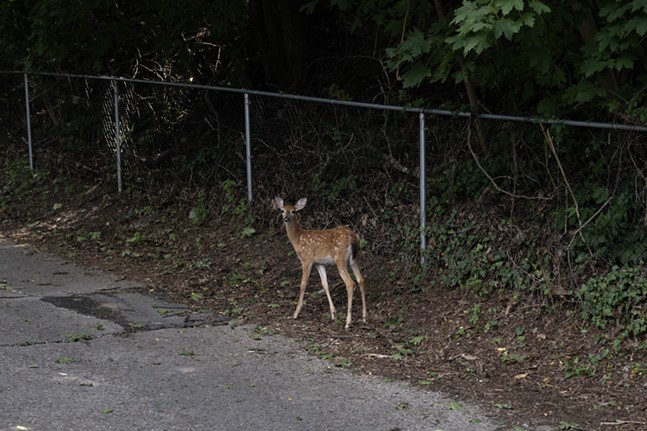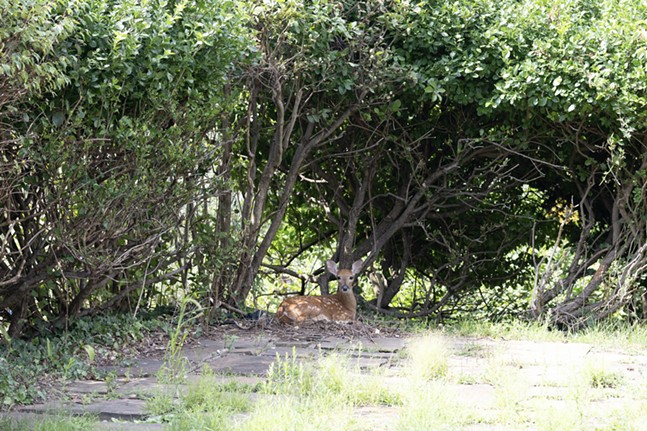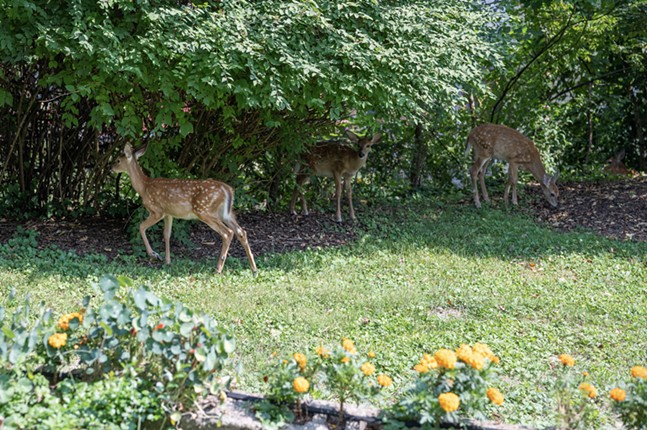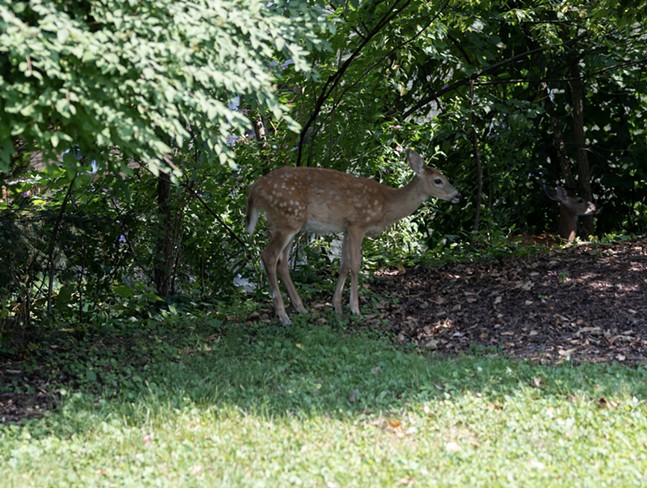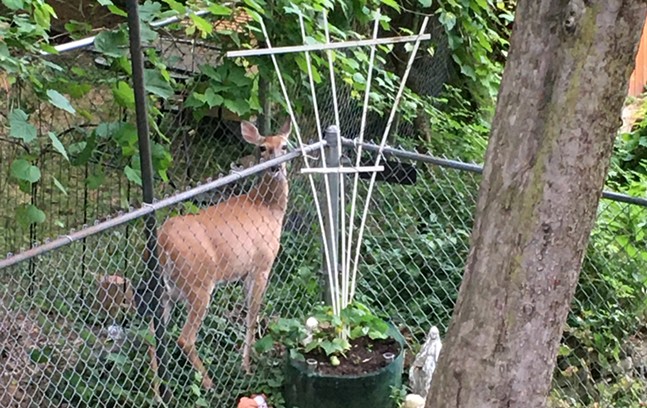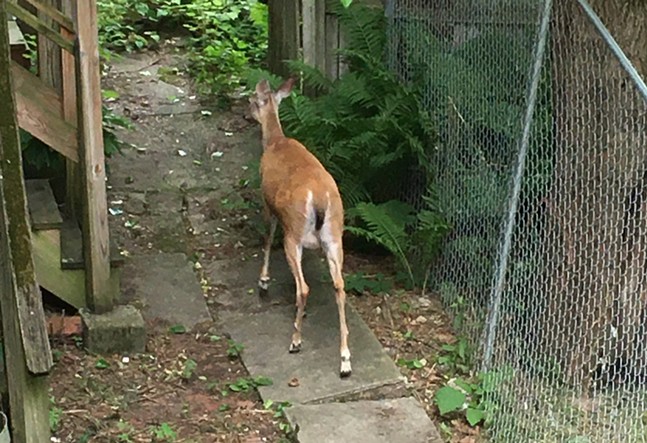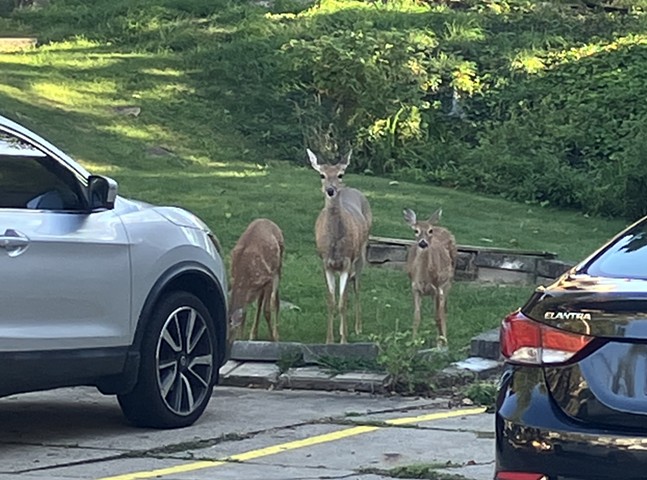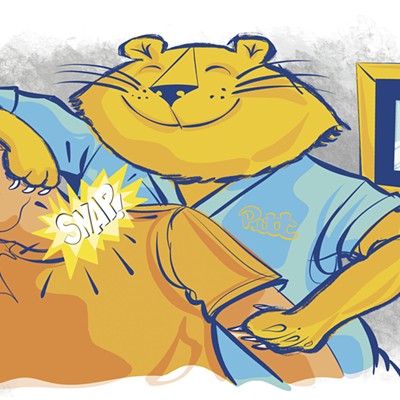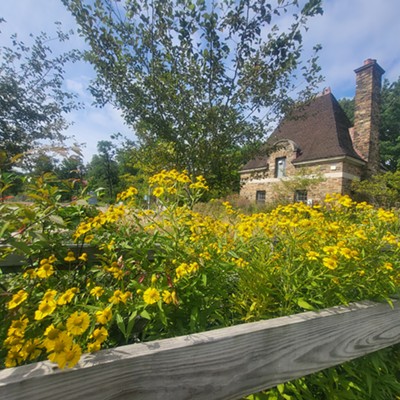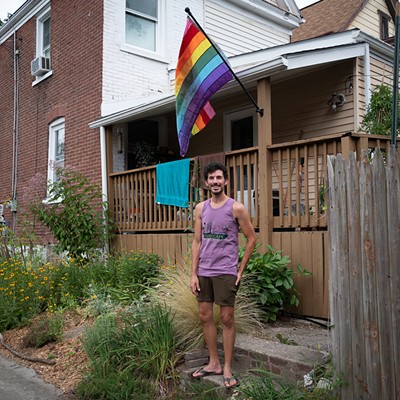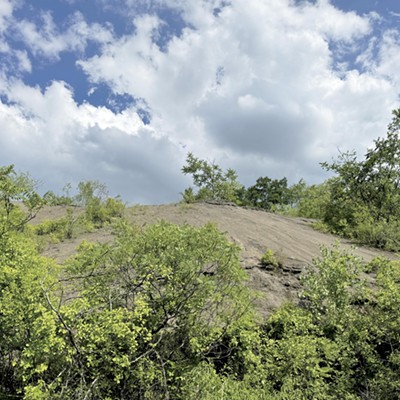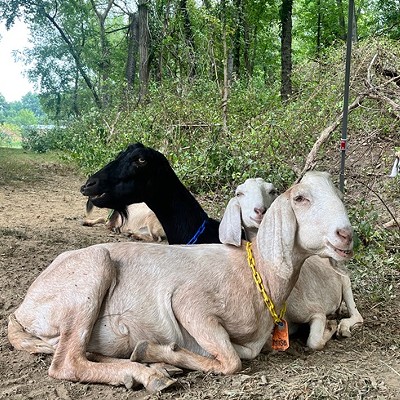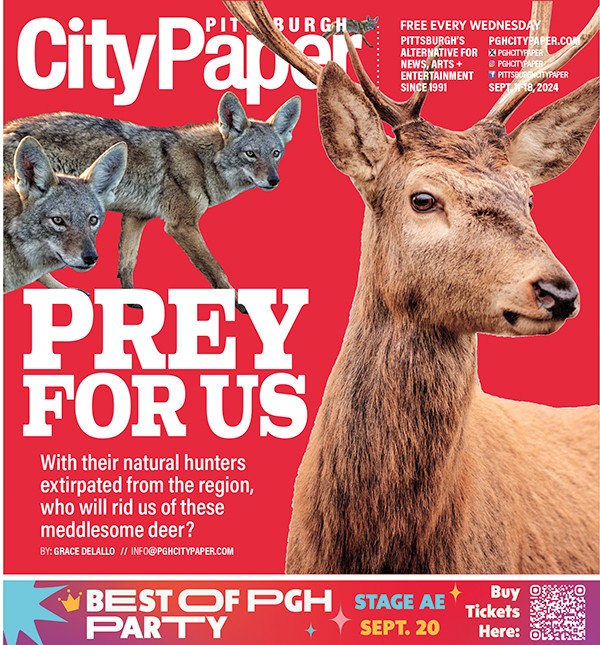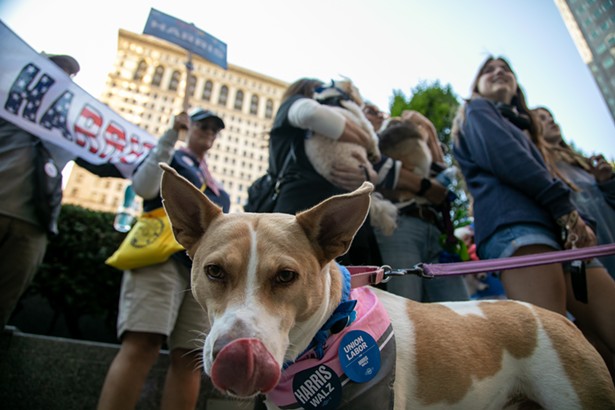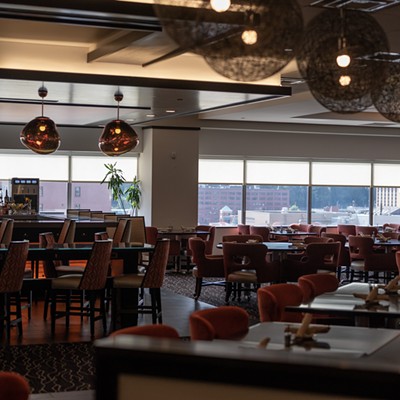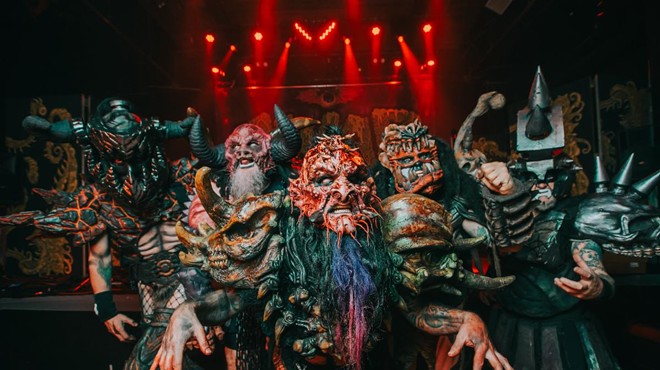Adaptability in wildlife is a key skill for surviving an ever changing world, but can adaptability actually cause harm?
The short answer: yes. Pennsylvania’s white-tailed deer population has exploded over the years, resulting in a slew of issues for suburban and urban communities alike. In an effort to curb the swelling population, the City of Pittsburgh piloted a bow-hunting program with the U.S. Department of Agriculture to manage the damage from deer. After last year’s program culled 108 deer and caused no public incidents, it’s expanding to Schenley, Highland, and Emerald View parks later this month.
But is the problem so bad that deer need culled to manage their population? And just how many deer does Pittsburgh have, anyway?
“We’ve removed deer’s main predators — the wolf and mountain lion,” Thomas Keller, a furbearer biologist with the Pennsylvania Game Commission, tells Pittsburgh City Paper. “Humans have stepped into that role, mainly through hunting.”
Erica Heide, a City of Pittsburgh senior park ranger, tells City Paper that, while Pittsburgh is unable to accurately track deer population sizes due to feasibility and cost, the city knows from indications that the current amount is unsustainable.
“We’re only supposed to see 20 to 30 deer [per mile] in Frick Park, and we are well above that,” says Heide. “In short, we don't have an exact answer of what our deer population looks like in the City of Pittsburgh. It's extremely difficult to get an accurate count since they're coming in and out of an ecosystem for food.”
Some estimates suggest that figure could be as high as 300 to 400 deer per square mile. And, with that many animals populating a single space, threats to biodiversity rise. Pittsburgh might have abundant greenspaces, but vulnerable saplings struggle to root under the constant pressure from herd activity.
“In terms of looking at the parks as shown, we always struggle with our understory in the forest. It's not as existent as we’d like to see it,” says Heide. “We don't have a lot of that in Pittsburgh because of the deer.”
Understories are critical for forest health, as they provide food and shelter for small animals, birds, and insects. But when more deer move in, other native species are evicted, making space for less desirable vegetation too.
“Invasive species have taken up space in that understory because they’re mostly deer resistant,” Heide adds. The city recommends that locals encountering deer-related issues contact 311.
While the threat to forest health and biodiversity is cause for concern alone, increased deer amounts also endanger human safety. Take, for example, findings from State Farm insurance reports.
The study found that Pennsylvanians have a one-in-59 chance of being involved in an animal-related collision — the third highest in the nation. In 2022 alone, there were 5,849 deer-related crashes in the state, resulting in 1,265 injuries and nine fatalities.
The Bureau of Animal Care and Control keeps data of how many deer it removes from roadsides. While a morbid act, this data helps determine population fluctuations.
Through compiling and analyzing this data, University of Pittsburgh professor Jeremy Weber and his graduate capstone group found that between 2004 and 2023, the amount of deer carcasses picked up by Animal Care and Control spiked from 140 to a stark 575 in just two decades — a 411% increase.
In a report summary for Deer Policy in the City of Pittsburgh, the Pitt researchers concluded that archery alone only stabilizes the current population size. Therefore, archery paired with temporary sharp shooting is recommended for optimal, cost-effective results.
The final report published in May of this year states, “We recommend that the City of Pittsburgh adopt managed recreational archery hunting in its five major parks indefinitely, complemented with contracted sharpshooting as needed.”
While deer culling is unpleasant, it’s more tragic when overpopulation causes more and more deer to intrude into roadways. And the unfortunate reality is that humans have caused this issue. But could a human-caused problem be solved with a human-centric approach, like bow hunting and sharpshooting, even if they prove effective? Is there a better way?
What if Pittsburghers could turn to their predator counterparts: coyotes?
“Coyotes can help contribute to population control, [but] they usually take on fawns,” says Travis Gallo, an Assistant Professor at the University of Maryland where he studies urban ecology and conservation. Gallo agrees that coyotes can help maintain a “landscape of fear” — a model that conceptualized how an environment shapes risk perception and response in predator-prey relationships.
“Embracing them as part of the solution is a valid argument,” he says. But when it comes to controlling deer overpopulation, “urban coyotes can’t do it alone.”
So what would it take for our city’s deer to reach equilibrium in their environment?
“I think to truly balance that trophic system, it’s not coyotes, it’s mountain lions and bears,” says Gallo.
Urban residents probably won’t be keen to welcome mountain lions or bears into their yards, so it looks like humans working to do their best, most ethical job at deer population control is the current best solution.
“Hunting is very much rooted in conservation. It is rooted in preserving our natural greenspaces,” says Heide about the origins of hunting — something hunters are keeping true to, even today. It’s part of why the Deer Management Program has a goal of donating a deer per archer to food banks in the area.
“I think what you've seen since COVID is a return to the importance of the land and how we can utilize the land to feed ourselves,” Keller says. “I’ve seen a resurgence of utilizing game as food.”
The truth is that, unless cities somehow embrace their native predators, the deer population crisis requires humans at the helm — but we can still enlist the help of our wild neighbors to restore some semblance of a balance to our urban greenspaces. Ultimately, what matters is creating a sustainable system that prioritizes safety and benevolence to all parties involved.

